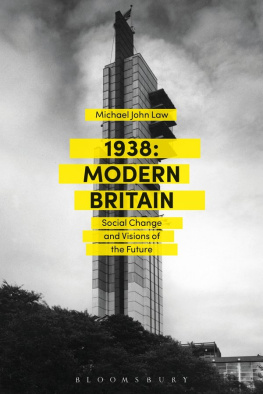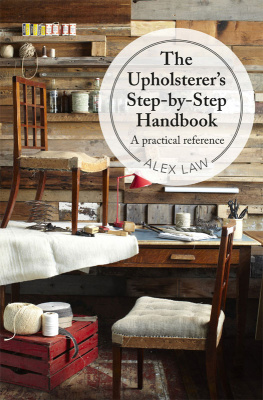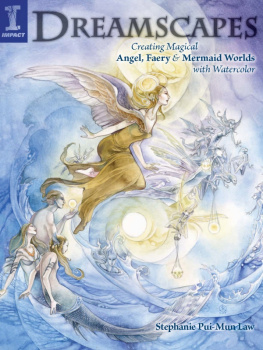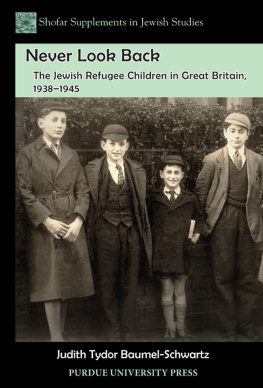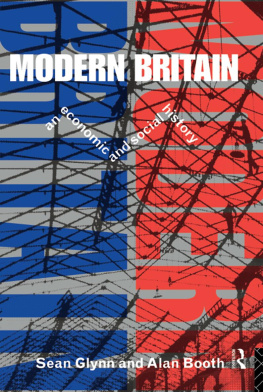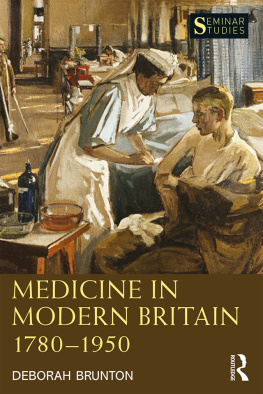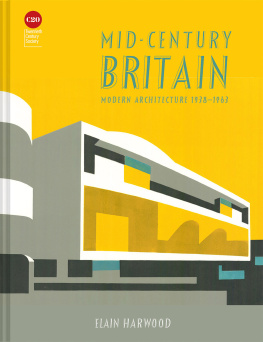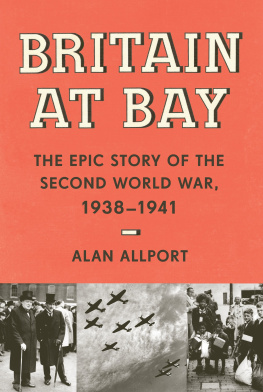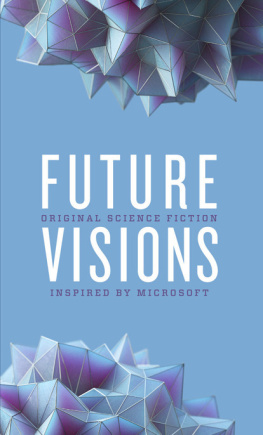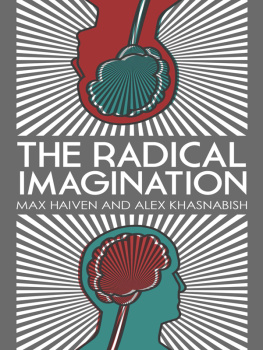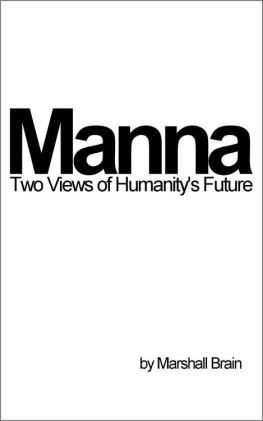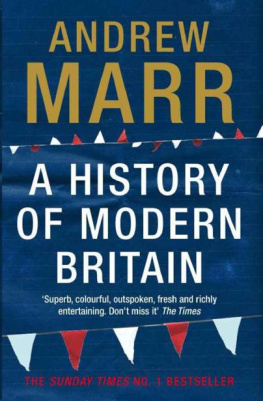Law - 1938: modern Britain: social change and visions of the future
Here you can read online Law - 1938: modern Britain: social change and visions of the future full text of the book (entire story) in english for free. Download pdf and epub, get meaning, cover and reviews about this ebook. City: Great Britain, year: 2018, publisher: Bloomsbury Publishing Plc;Bloomsbury Academic, genre: Romance novel. Description of the work, (preface) as well as reviews are available. Best literature library LitArk.com created for fans of good reading and offers a wide selection of genres:
Romance novel
Science fiction
Adventure
Detective
Science
History
Home and family
Prose
Art
Politics
Computer
Non-fiction
Religion
Business
Children
Humor
Choose a favorite category and find really read worthwhile books. Enjoy immersion in the world of imagination, feel the emotions of the characters or learn something new for yourself, make an fascinating discovery.
- Book:1938: modern Britain: social change and visions of the future
- Author:
- Publisher:Bloomsbury Publishing Plc;Bloomsbury Academic
- Genre:
- Year:2018
- City:Great Britain
- Rating:4 / 5
- Favourites:Add to favourites
- Your mark:
- 80
- 1
- 2
- 3
- 4
- 5
1938: modern Britain: social change and visions of the future: summary, description and annotation
We offer to read an annotation, description, summary or preface (depends on what the author of the book "1938: modern Britain: social change and visions of the future" wrote himself). If you haven't found the necessary information about the book — write in the comments, we will try to find it.
Law: author's other books
Who wrote 1938: modern Britain: social change and visions of the future? Find out the surname, the name of the author of the book and a list of all author's works by series.
1938: modern Britain: social change and visions of the future — read online for free the complete book (whole text) full work
Below is the text of the book, divided by pages. System saving the place of the last page read, allows you to conveniently read the book "1938: modern Britain: social change and visions of the future" online for free, without having to search again every time where you left off. Put a bookmark, and you can go to the page where you finished reading at any time.
Font size:
Interval:
Bookmark:
1938: Modern Britain
1938: Modern Britain
Social change and visions of the future
MICHAEL JOHN LAW
Bloomsbury Academic
An imprint of Bloomsbury Publishing Plc

Contents
Figures
Churchmans Cigarettes, Modern Wonders #22 High-Power Grid-Glow Tube, 1938, Image Credit: Authors Collection. |
Googles Ngram analysis of the word modern British English, Image Credit: http://books.google.com/ngrams. |
Wills Cigarettes, Speed #5 De Havilland Comet racer, Image Credit: Authors Collection. |
Modern Wonder magazine, 14 May 1938, Image Credit: Authors collection. |
ICI Pavilion by Basil Spence, Image Credit: Architectural Press Archive/RIBA Collections. |
Scottish Pavilion, architectural drawing by Basil Spence. Image Credit: Historic Environment Scotland (Sir Basil Spence Archive). |
The Tower of Empire by Thomas Tait, Image Credit: Architectural Press Archive/RIBA Collections. |
Philips large-screen television, Image Credit: Daily Herald Archive/National Media Museum/Science & Society Picture Library. |
Adoption rates for radio and television in 1938 using Ryan and Gross. Image Credit: the author. |
Prototype handheld television, Image Credit: Imagno/Hulton Archive / Getty Images. |
Executive floor, The Adelphi Building, Image Credit: Dell & Wainwright / RIBA Collections. |
The Adelphi Building by Stanley Hamp, Image Credit: Architectural Press Archive/RIBA Collections. |
Picture Posts first cover, 1 October 1938. Image Credit: IPC Magazines/Picture Post/Getty Images. |
Speedway Spectators, Picture Post, 22 October 1938, Image Credit: Felix Man/Picture Post/Getty Images. |
The Prospect Inn, car park. Image Credit: RIBA Collections. |
A streamlined charabanc/motor coach. Image Credit: Photo by Chris Sampson. Creative Commons Attribution 2.0 Generic licence. Converted to monochrome, cropped and edited. |
The Prospect Inn, Minster, Kent, by Oliver Hill Image Credit: RIBA Collections. |
The Prospect Inn, plan. Image Credit: the author, prepared by TheBr&newstudio. |
Birmingham Airport by Nigel Norman, Image Credit: English Heritage/Heritage Images/Getty Images. |
Ramsgate Airport by David Pleydell-Bouverie, Image Credit: Dell & Wainwright/RIBA Collections. |
Opening of Manchester Airport terminal. Image Credit: Reproduced by permission of Historic England Archive. |
Tables
2.1 | British cigarette card sets issued in 1934 and 1938 |
4.1 | Percentage of British families with a wireless licence, 192438 and percentage of British families with a wireless licence by region in 1938 |
4.2 | Examples of foreign short-wave radio stations available in Britain in 1938 |
5.1 | Large London head office buildings constructed between the wars |
Maps
8.1 | Simplified map of domestic airline routes 1938 |
8.2 | Maybury Committee proposed hub and spoke network 1937 |
Writing a book seems, when you are doing it, to be a very solitary task. In truth, many people have helped me with 1938: Modern Britain .
I would like to thank the editorial staff from Bloomsbury Academic, who provided encouragement at the beginning of this project and consistent, professional support thereafter. I am grateful for the good advice provided by Mark Clapson and Peter Catterall and would like to thank Martin Doherty and the University of Westminster for providing funding for the illustrations for the book. Geoff Levett and Phil Hatfield have had to bear the brunt of putting up with me talking about this book for the best part of two years.
My family have always been supportive of my work, whether it is as an academic or in my previous business life, and without them it would be hard to imagine I could have had any success as a writer. Particular thanks to Pippa, who read the drafts of this book and steered me away from some overwritten sentences and clumsy grammar.
MJL
The history of 1938 is well known. It was an interesting year, too interesting in some ways as the competing claims of appeasement and the preparations for war filled the newspapers. In the headlines were Chamberlains meetings with Hitler, Kristallnacht , the Spanish Civil War, and at home, Air Raid Precautions and planning for the evacuation of children from London in the event of a war. Each of these news items brought home the foreboding possibility of another world war. However, among all these profound world events, something else far less obvious at the time was happening, a modern world in rapid development, a process that was to be halted by the Second World War and the years of austerity that followed it.
The starting point for this book was an idea that there was something hidden and odd about 1938 that most studies of the period have ignored and that warranted further investigation. My initial prompt was coming across Modern Wonder , a set of lively weekly magazines from 1937 and 1938, in a Brighton junk shop. As promised in the title, the magazines brightly coloured covers and exciting features delivered a vision of the future of science and technology. Their enthusiastic articles described a world yet unaffected by wartime fears.
This find provoked two pieces of informal research. First was to use Googles Ngram viewer, which searches digitized books and magazines to calculate the relative frequency of a words use over time. British sources showed a peak in use of the word modern in the late 1930s and early 1940s, reflecting a long upward trend over many decades. Second was a search on eBay, the internet marketplace, for material featuring both of the terms modern and 1938. This returned many interesting items for sale, including books, magazines, cigarette cards and postcards from an Empire exhibition in Glasgow. Contrary to what I had expected, instead of material on the latest navy destroyer or fighter planes, the search mostly produced representations of civilian technologies. There were pictures of giant American telescopes and magazine features on the secrets of electric trains. Perhaps some national cognitive dissonance was in play, Britain not wanting to believe war was coming.
A more systematic investigation of British newsreels, newspapers and magazines revealed many different major projects in progress in 1938. Not connected to the war, they showed a modern society in development. Construction projects for schools, hospitals, airports and office blocks were in full swing. Publishers launched new magazines, exhibitions were held to boost imperial pride or to sell televisions to expectant, wealthy customers and increased working-class mobility prompted new types of leisure.
This modernity was apparent to some at the time. Cicely Hamilton, novelist, travel writer, commentator and former suffragette, wrote about the changes she had seen in the previous fifteen years. Hamilton and Orwells examples are reflected in the choice of case studies for this book.
As the title of this chapter proposes, this book is a partial history of modern Britain in 1938. I use the term partial observation in 1978. Since then, there have been many new studies of the 1930s that have taken a more thematic and less temporal view of the decade. However, there is still some truth in her idea; the historiography of the end of this decade continues to be dominated by the profound world events of 1938 and 1939.
Next pageFont size:
Interval:
Bookmark:
Similar books «1938: modern Britain: social change and visions of the future»
Look at similar books to 1938: modern Britain: social change and visions of the future. We have selected literature similar in name and meaning in the hope of providing readers with more options to find new, interesting, not yet read works.
Discussion, reviews of the book 1938: modern Britain: social change and visions of the future and just readers' own opinions. Leave your comments, write what you think about the work, its meaning or the main characters. Specify what exactly you liked and what you didn't like, and why you think so.

